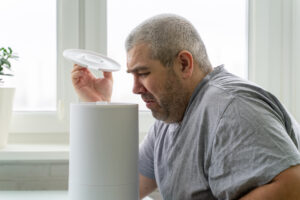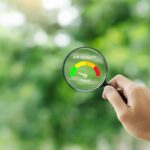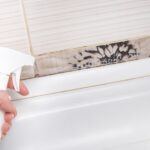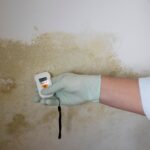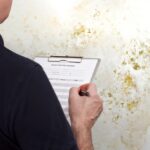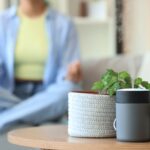Mold in Humidifiers: What You Need to Know
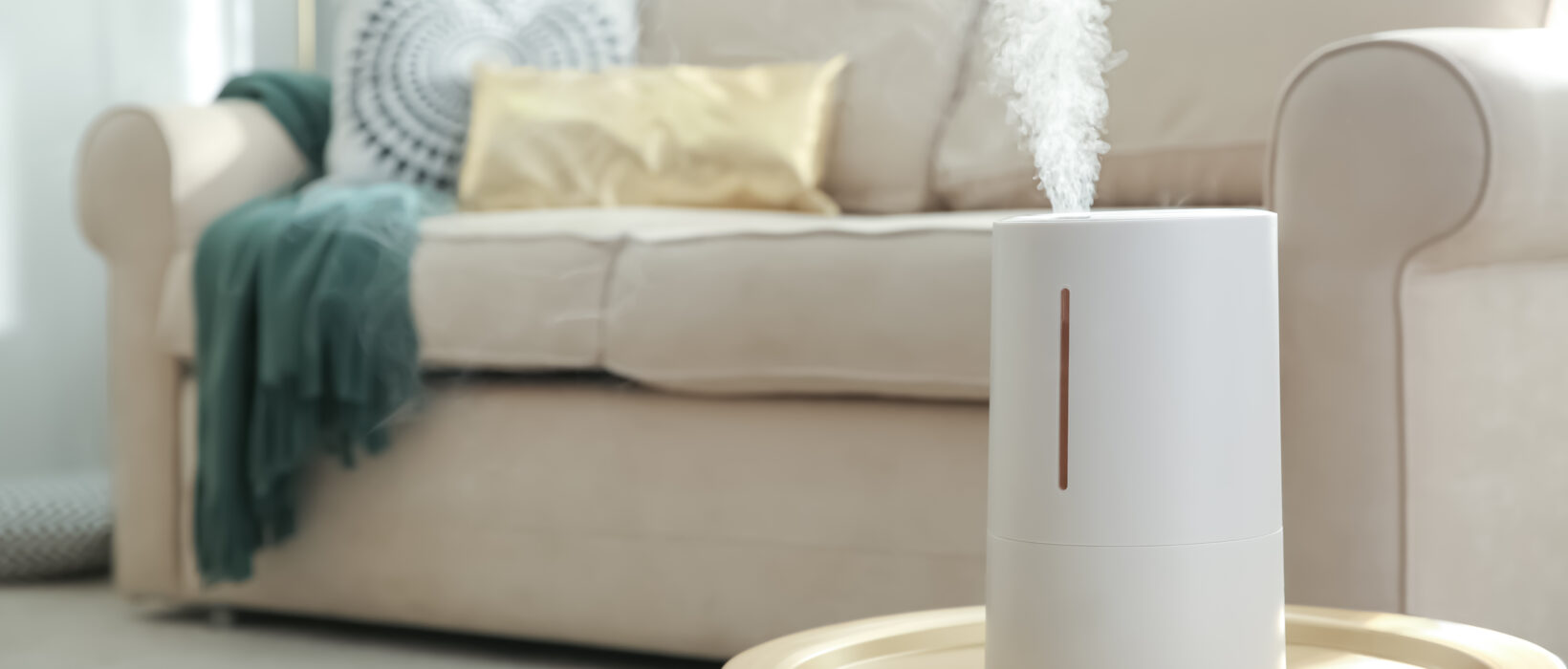
Humidifiers help add moisture to the air, which is especially useful when the air is dry, like in winter. By releasing water vapor, they keep the air at a comfortable humidity level, helping with things like dry skin, irritated sinuses, and static electricity.
But it can develop mold if you don’t clean your humidifier often. The water and warmth inside create the perfect conditions for mold to grow. Mold in your humidifier can be bad for your health, especially when the spores are released into the air, which you could breathe in. This can lead to breathing problems, allergies, and other health issues, so keeping your humidifier clean and dry is important.
Do Humidifiers Cause Mold?
Humidifiers don’t directly cause mold, but they can create the right conditions for mold to grow if not cleaned regularly. Humidifiers release moisture into the air, which helps keep things comfortable. However, mold thrives in warm, moist environments. When water is left sitting in a humidifier, especially without being emptied or cleaned, it can become a perfect place for mold to grow.
The main issue is stagnant water. If the water in the tank isn’t changed daily or if the humidifier isn’t cleaned properly, mold can start to develop. As the humidifier runs, it can spread mold spores into the air, which can affect air quality and pose health risks.
So, while the humidifier itself doesn’t cause mold, not cleaning and maintaining it can lead to mold growth. Regular cleaning will keep the mold away and help your humidifier work safely, improving the air quality in your home.
Signs of Mold in Your Humidifier
Spotting mold in your humidifier early is important for keeping your air clean and protecting your health. Here’s what to watch for:
Strange Smell: If your humidifier smells musty or like mildew, there’s a good chance mold is growing inside.
Visible Mold or Stains: Check for dark spots or streaks in the water tank, on the filter, or other parts of the humidifier. Mold can show up in black, pink, red, or orange.
Allergy Symptoms: If you’re sneezing, coughing, or dealing with itchy eyes when the humidifier is on, mold spores could be in the air.
To stay ahead of mold, check your humidifier often, clean it regularly, and always use fresh water. These easy steps can keep your humidifier running safely and effectively.
What Does Mold in a Humidifier Look Like?
Mold in a humidifier can show up in different colors and textures depending on the type and environment. Here’s how to recognize it:
Pink Mold
Pink mold is slimy and can range from light pink to reddish shades. It’s caused by bacteria rather than mold but grows in the same damp conditions. While it’s not as harmful as black mold, it can still irritate your breathing. Cleaning it right away is the best way to handle it.
Black Mold
Black mold is the most concerning type. It shows up as dark spots or patches and can sometimes look fuzzy. It’s known to cause health problems like allergies, breathing issues, and even serious complications for people with weaker immune systems. If you spot black mold, clean your humidifier thoroughly or replace it if the mold is too severe.
Red Mold
Red mold has a reddish tint and, like pink mold, is usually linked to bacteria. It tends to grow when the water in your humidifier isn’t changed often. While it’s less dangerous than black mold, it can affect air quality and cause irritation, so regular cleaning is a must.
Orange Mold
Orange mold isn’t very common but can still show up in humidifiers. It’s often gel-like and grows in standing water. It’s not as risky as black mold but can cause bad smells and mild breathing discomfort. Keeping your humidifier clean will help prevent it.
Is Mold in a Humidifier Dangerous?
Yes, mold in a humidifier can be harmful, especially when it releases mold spores into the air. Breathing in these spores can cause health problems, especially for people with asthma, allergies, or weak immune systems. Even if you’re healthy, being exposed to mold over time can still make you feel sick.
How Mold Spores Affect Your Health
When a humidifier spreads mold spores into the air, it can irritate your nose, throat, and lungs. You might experience:
Sneezing
Coughing
Itchy or watery eyes
Nasal congestion
For people with asthma, mold can make symptoms worse and lead to more attacks. In serious cases, mold exposure can cause lung infections, especially for those with weakened immune systems.
Different Types of Mold and Their Dangers
Black Mold: This is one of the most dangerous types. Breathing in black mold spores can cause serious respiratory issues, headaches, fatigue, and long-term exposure can lead to more serious health problems.
Pink Mold: While not as harmful as black mold, pink mold can still cause mild irritation in your lungs or skin infections in some people.
Red and Orange Mold: These molds are usually not as harmful, but they can still affect air quality and may irritate sensitive individuals.
How to Clean Mold in a Humidifier
Finding mold in your humidifier? Don’t worry! Cleaning it is pretty easy and just takes a few simple steps. Here’s how to get it clean and keep it in good shape:
Disassemble the Humidifier
Start by unplugging the humidifier. Take out the water tank, the filter (if there is one), and any other removable parts like the nozzle or tray. This will give you access to the spots where mold might be hiding.
Clean with Vinegar, Bleach, or Hydrogen Peroxide
To clean the mold, you can use one of these options:
Vinegar: Mix equal parts white vinegar and water. Pour it into the water tank and let it sit for 30 minutes to loosen up any mold or buildup.
Bleach: If the mold is stubborn, mix 1 tablespoon of bleach with 1 gallon of water. Be sure to rinse it really well afterward to avoid any bleach left behind.
Hydrogen Peroxide: Another option is hydrogen peroxide. Just pour it into the water tank and let it sit for 30 minutes before rinsing.
Clean the Tank
After letting the solution sit, scrub the inside of the tank with a soft brush or cloth. Pay close attention to the corners and hidden spots where mold could be hiding. Be gentle so you don’t scratch or damage the tank.
Clean the Filter
If your humidifier has a filter, check if it’s washable. If it is, rinse it with water or soak it in a vinegar solution. If the filter is too moldy, you might need to replace it.
Clean the Nozzle and Other Parts
Don’t forget to clean the nozzle, vents, and other parts that touch water. Use a soft brush or cotton swab to carefully clean these areas. Mold can build up in hard-to-reach spots, so take your time.
Dry Thoroughly
After cleaning, make sure all the parts are completely dry before putting the humidifier back together. Mold thrives in damp places, so let everything air dry for a few hours or overnight.
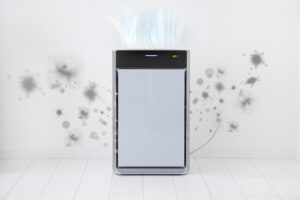
How to Prevent Mold in Humidifiers
To keep mold out of your humidifier, regular care and the right environment are key. Here’s how you can easily keep it clean and mold free:
Change the Water Every Day
Make it a habit to change the water in your humidifier every day. Stagnant water is a perfect spot for mold to grow, so fresh water helps stop it from developing.
Dry It Out After Use
After you’re done using the humidifier, make sure to empty the water tank and wipe down the inside with a clean cloth. Let it air dry completely before putting everything back. Mold thrives in moist conditions, so drying it properly is really important.
Clean It Weekly
Cleaning your humidifier once a week is a good way to stop mold. If you use it more often, try cleaning it more regularly. A quick wipe or rinse is all it takes to keep mold from growing.
Use Distilled Water
If you can, opt for distilled water instead of tap water. Tap water has minerals that can lead to mold and bacteria buildup. Distilled water has fewer minerals, which helps keep both the humidifier and the air cleaner.
Store It in a Dry Place
When you’re not using your humidifier, store it in a dry spot. This keeps moisture from building up, reducing the chance of mold growth. Avoid places like bathrooms or basements, where humidity is higher and mold is more likely to form.
Choosing the Right Humidifier to Prevent Mold
When you’re looking to prevent mold in your humidifier, picking the right one really matters. Here are a few features that can help keep mold out and make the air in your home cleaner and fresher:
Antimicrobial Materials
Some humidifiers come with special materials or coatings that help stop mold and bacteria from growing. These materials work to keep germs from building up in the water tank and other parts of the humidifier. Choosing a humidifier with this protection can reduce how often you need to clean it.
Self-Cleaning Features
Many newer humidifiers have self-cleaning features that make upkeep easier. These models use technology to help reduce the buildup of minerals and mold in the tank, which means you won’t need to clean it as often. While they still need some attention every now and then, self-cleaning humidifiers save you time and effort while keeping mold in check.
Built-In Filters
Humidifiers with built-in filters can improve air quality and help prevent mold growth. The filters trap dust, bacteria, and other particles, which keeps mold spores from floating into the air. Look for models with high-quality filters that are easy to clean or replace so they continue to do their job effectively.
Maintenance Requirements
It’s important to choose a humidifier that matches how much time and effort you’re willing to spend on cleaning it. Some models are low-maintenance because of their features, while others might need a bit more care. Pick one that fits your lifestyle, whether you prefer a humidifier that’s easy to clean regularly or one that requires less frequent maintenance.
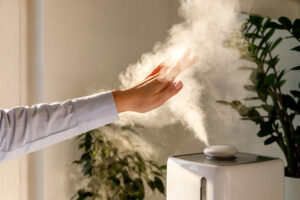
How to Keep Your Humidifier Clean and Mold Free
To keep the air in your home fresh and healthy, it’s important to keep your humidifier clean. Regular cleaning helps prevent mold, which can lead to health problems like breathing issues, allergies, and skin irritation. Make sure to change the water often, dry the humidifier after use, and clean it at least once a week to keep mold away.
When choosing a humidifier, look for one with features that make cleaning easier, like antimicrobial materials, self-cleaning options, and built-in filters.
Taking these simple steps will not only help you maintain better air quality but also keep your humidifier in good shape for longer.
Is your humidifier truly improving your air quality, or could it be doing more harm than good? Find out the best option to keep your home environment healthy. Read our article on air purifiers vs. humidifiers and make an informed choice.
FAQs
Can humidifiers cause mold in my home?
Yes, they can. If a humidifier isn’t cleaned or maintained, it can add too much moisture to the air. This creates a perfect spot for mold to grow, especially on walls, furniture, or carpets. Regular cleaning and keeping humidity levels in check can help prevent this.
How can I tell if my humidifier has mold?
You might notice a musty smell, discoloration inside the tank, or visible mold spots. Sometimes, the humidifier won’t work as well, or you’ll feel a gritty texture inside. Checking it regularly can stop mold before it spreads.
Is mold in a humidifier harmful to health?
Yes, it can be. Breathing in mold spores from a dirty humidifier can trigger allergies, irritate your lungs, or make asthma worse. It is especially risky for people with health issues like weak immune systems or breathing problems.
What type of water should I use in my humidifier to prevent mold?
Distilled water is your best bet. It has fewer minerals than tap water, so it is less likely to cause mold, bacteria, or that annoying white dust.
How often should I clean my humidifier?
A good rule is to clean it once a week. If you are using it every day, give it a quick rinse and wipe-down daily to keep mold and bacteria away.
Are there humidifiers designed to resist mold?
Yes, some humidifiers are made with materials that fight mold or have self-cleaning features. If you are shopping for one, look for these options. They make maintenance easier and keep your air cleaner.
Can I use essential oils in my humidifier to kill mold?
Most humidifiers are not made for essential oils, and using them can damage the unit or void your warranty. It is better to stick with regular cleaning. If you want to use essential oils, go for a diffuser designed specifically for that.
What should the indoor humidity level be to prevent mold in my home?
Aim for 30% to 50%. If it is higher, mold can grow. If it is lower, the air might feel too dry. A hygrometer (a small device that measures humidity) can help you keep things balanced.
Can pink, black, red, or orange mold in my humidifier affect my health differently?
Black mold is the most dangerous because of its toxic spores. Pink, red, and orange molds are usually less harmful but still a sign that your humidifier needs cleaning. No matter the color, mold should be dealt with quickly.
What is the best way to store a humidifier when not in use?
Empty the water, dry every part completely, and store it in a cool, dry place. This stops moisture from hanging around and keeps mold from forming while it is packed away.


